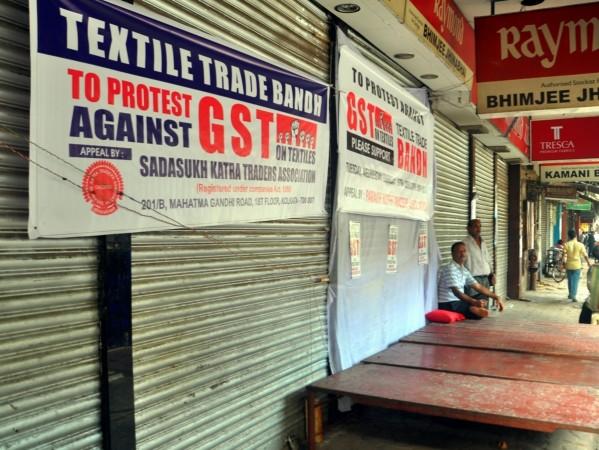
The Centre may have hailed the goods and services tax (GST) as one that would solve the problems of multiple rates of taxes, but two industries — tourism and textiles — with a cumulative business of around $244 billion are not buying it. The problem is not only the tax rate but also of claiming benefits of input tax credit, according to a report in The Telegraph.
Many textile traders across the country went on strike on the eve of the July 1 implementation of the GST and after as well, incurring an estimated loss of Rs 40,000 crore, the daily said.
Also read: Narendra Modi's GST is a 'wasted opportunity', says Economist
The rate of tax on fabric is different from that of the job of converting it into an apparel, which then attracts tax depending on the price; this has confounded the $108-billion industry.
"Typically, if a sari costs Rs 1,000, the yarn costs Rs 300, the powerloom adds Rs 400 value to it, the printer adds another Rs 100 and the trader has a margin of Rs 100. If the powerloom pays a tax of 5 per cent, it's tough for the merchant to get the higher input credit the yarn mill had paid, nor the other taxes paid by the others in the chain as he is sub-contracting work," Manmeet Singh Kohli, a Delhi-based garment wholesaler and exporter, told the daily.
"The crux of the matter is that the input credit is higher than output tax... this is a peculiarity of the textile business," the Telegraph quoted Biswajit Dhar, a JNU professor, as saying.
For the $136-billion tourism industry, which also contributes around $20 billion in foreign exchange earnings annually, the problems have to be seen in the wake of intense competition posed by rival destinations such as Thailand, Malaysia and Dubai.
"The 28 per cent tax is a huge burden...we foresee domestic clients who used to opt for 5-stars shifting downwards and foreign package tours from Southeast Asia and West Asia undercutting us because of the way GST is designed or rather is not designed," the daily quoted Sarabjit Singh, vice-chairman of the Federation of Associations in Indian Tourism and Hospitality (FAITH), as saying.
"We had given examples of 20 other countries where the GST is low and which are recording large tourist arrivals," he added.
Also read: GST is a boon for travellers within the country
The tourism sector is believed to employ about 7.5 million people while the textile industry employs about 45 million people directly and 60 million people indirectly, the Telegraph said.
Tour operators in the outbound travel segment are worried on the domino effect of 5 percent GST, if it is levied on the total outbound amount.
"GST should be charged on the margins we make and not on the total outbound packages. While we do not mind paying taxes, outbound travel taxes will go up by 5 per cent with a cascading effect. There would be a tax on tax with respect to hotels and airlines which are already taxed as part of the packages,'' the BusinessLine quoted Pronab Sarkar, President of the Indian Association of Tour Operators, as saying.














